
NOW Articles Written By Members
An Argument for Collecting Half Dollars
Late Night and a Russian Type Set
Old Country Coins: Newfoundland’s Rarest 5-Cent
Milwaukee Medals: Fifth Ward Constable
A look back at a common, but classic commemorative – Wisconsin’s Territorial Centennial
A side-tracked story: Mardi Gras Doubloons
A look back at a collecting specialty – the O.P.A. ration tokens of WWII
Bullion And Coin Tax Exemption – Act Now!
Is There A Twenty Cent Piece We Can Add To A Collection
Capped Bust Half Dollars: A Numismatic Legacy
U.S. Innovation Dollars: Our Most Under-Collected Coin?
My 2023 ANA Summer Seminar Adventure
>> More articles in the Archive
For more NOW Articles Written By Members,
Not Your Typical Olympic Sports
By Juan L. Riera #2489L
Recently, the US House of Representatives passed bill H.R. 1923 authorizing several changes to US coinage, as well as authorizing award medals for the 2028 Olympic Games in Los Angeles. Coincidentally, I recently discovered that a relative, my grandmothers first cousin, Armando Mencia, was an Olympian at the 1932 Los Angeles Summer Olympics. While wondering what sport he might have excelled at, and if he had won a medal, I began looking into the matter.
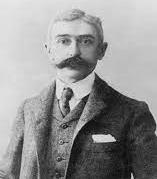
Pierre de Coubertin
The founder of the modern Olympic Movement that led to the Modern Olympiad was Pierre de Coubertin. He believed in an ideal that men being educated in both mind and body should compete in sport rather than war. Another of his desires was to combine both art and sport and these ideals led the Olympic Games to include artistic competition. Although he encountered resistance, between 1912 and 1948 the Olympics had art competitions with medals awarded in five categories- Architecture, Literature, Music, Painting, and Sculpture. The catch was that they had to be inspired by sports- imagine the theme music from the movie Chariots of Fire. Because of this clause the architecture competition frequently involved the design of a stadium, an arena, or a similar type of structure.
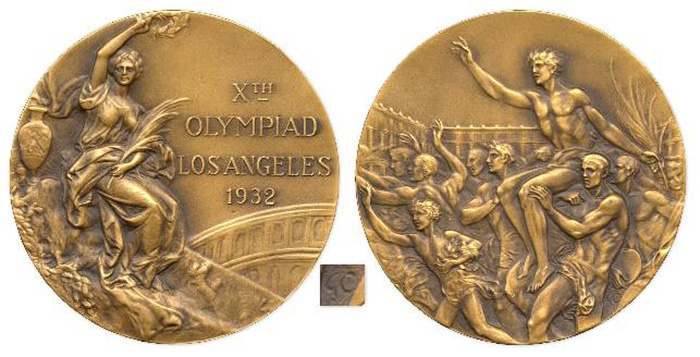
Bronze Olympic Medal From the 1932 Summer Olympics, Held in Los Angeles, California
Similarly, with each Olympic competition the categories changed or were altered slightly. For example, the music category occasionally included a choral competition. In the case of my grandmother’s cousin, he competed in the music category, but since it was during the Great Depression and travel was quite expensive, apparently there did not have to be a musical performance- he just had to send in his musical composition. From what I understand from family members, he was an excellent piano player and had a desire to be a professional musician.
Those plans were squashed by his mother who urged another profession. He studied law at the University of Havana, and in The Hague, Netherlands gaining a doctorate in International Law and becoming a lawyer at the League of Nations. Because of his diplomatic work and credentials, at some point before 1932 he gained Swiss citizenship- he competed in the 1932 summer Olympics for Switzerland.
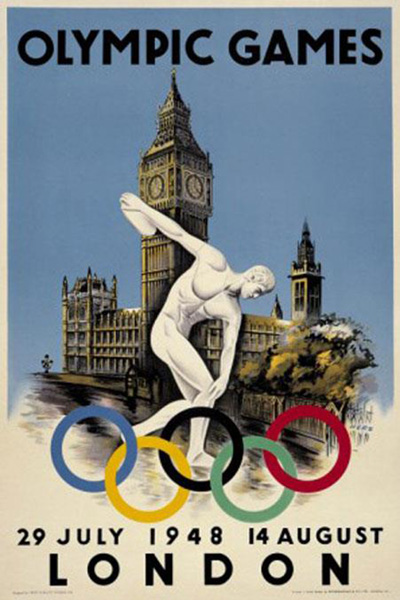
After the 1948 Olympics the arts category was eliminated as those who competed in these categories were considered professionals and the athletes were viewed as amateurs. Starting with the 1956 Olympics an Olympic cultural program has taken their place.
Interestingly, all three medals (gold, silver, bronze) were not necessarily awarded at each of the Olympics where the Arts categories competed.
These Art competitions took place at seven Olympics, 23 nations won medals in these categories- the U.S., Canada, Japan, and the other 20 were all European nations. Of the 147 total medals issued in these “Arts” categories, 45 were gold, 53 were silver, and 49 were bronze.
Initially, starting in 1896 at the Athens games, winners were crowned with an olive wreath and awarded a silver medal attached to a colored ribbon with a pin to fix it to the athlete’s chest. Starting in 1903 at the St. Louis games, gold, silver, and bronze medals were awarded for first, second, and third place. Starting at the 1960 Rome games medals were designed to be placed around the recipient’s necks- a laurel leaf chain design on that occasion and subsequently a colored ribbon has been used. Since the start of the modern Olympics, medals for summer and winter games have had a different design appearance within some guidelines and certain standards that are altered or modernized periodically.
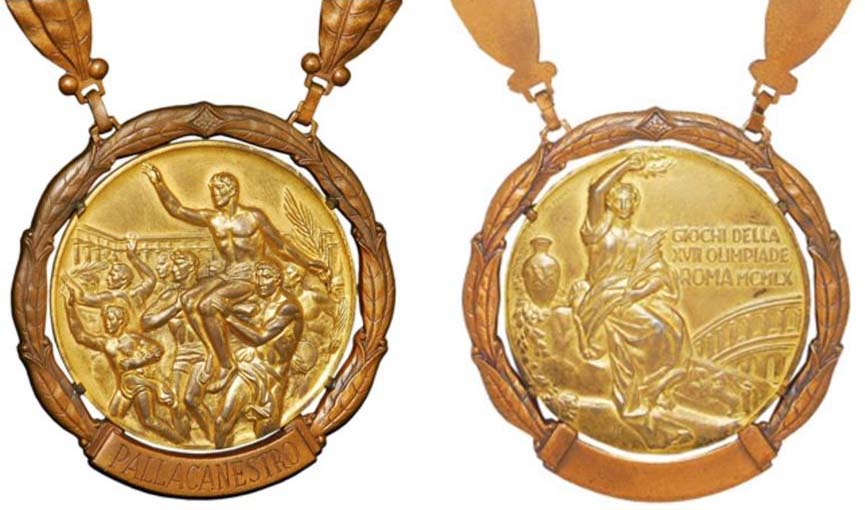
1960 Rome Olympic medal with laurel wreath chain design.
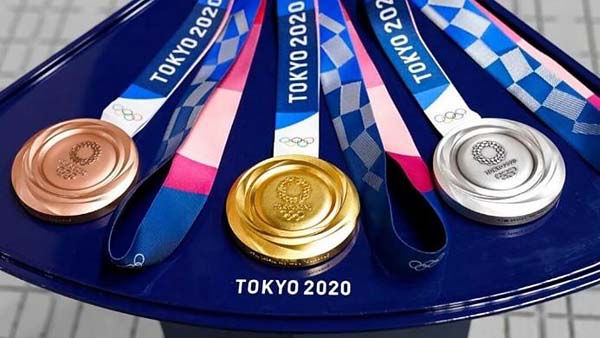
2020 Tokyo Olympic medal (held in 2021)
Have an interesting numismatic topic you’d like to share with your fellow NOW members?
Send your article to evan.pretzer@protonmail.com today!!!